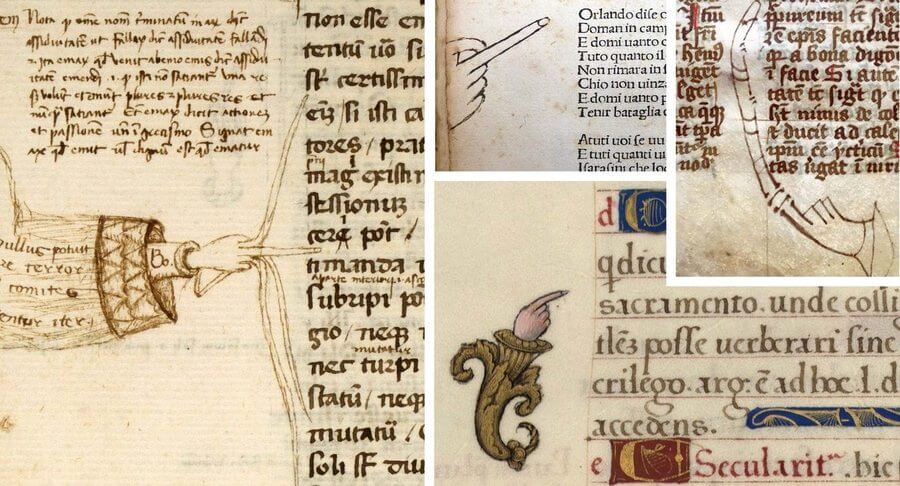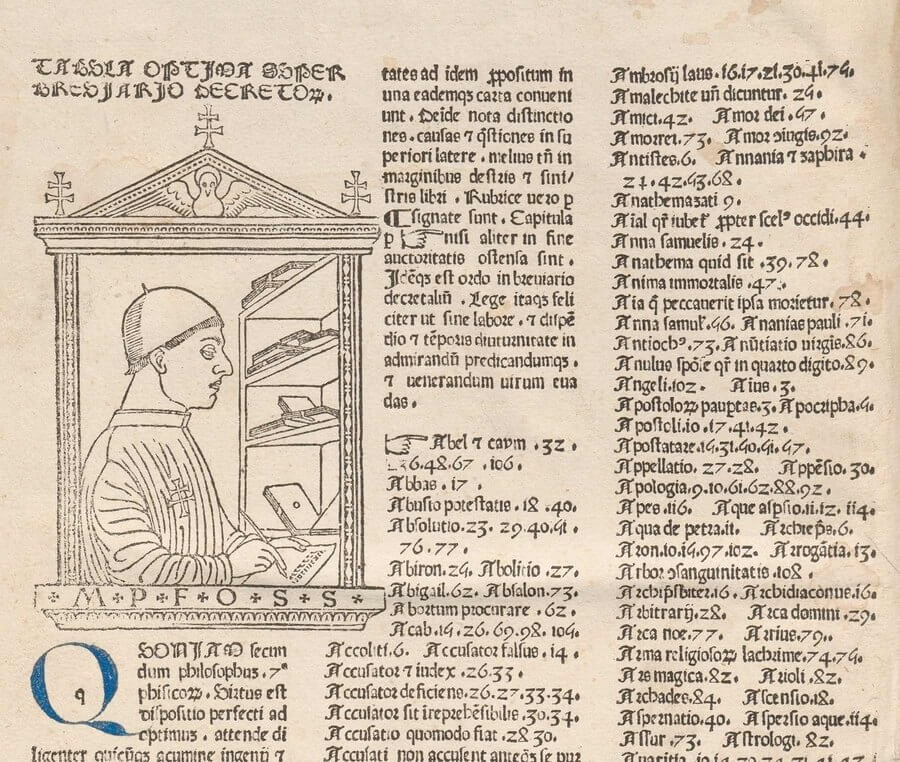
Almost in all typeface families or at least in classic typefaces we can find symbols of pointing hands. There is a hand pointing left, right, up or down. ☞☜☟
This pointing finger symbol has many names: Lamb’s fist, printer’s fist, bishop’s fist, pointer, hand director and hint.
The most obvious name is “one hand.” The academic consensus has more or less settled on the word «manicule“, From the Latin maniculum, which means”little hand».
If the font does not have these “little hands”, you can find them in the special characters menu. In almost all text or image editing programs.
I write all the articles that I publish in the blog in Google Docs, and that option is in the menu: Insert / Special Character. A small window opens where you can find all those special characters organized by type.

History of pointing hands in texts
Those hands with a pointing finger have a lot of history, at least they have a thousand years of existence. In medieval texts the authors drew small hands pointing to the texts to draw the reader’s attention.☟
It is believed that the first “handyman” printed in a book was in the: Breviarium totius juris canonici (summary of canon law), compiled by emPaolo Attavantiojis, which was published in the year of 1479.

People who owned books in the early Renaissance also drew their hands on the margins of the pages. It was like a way of underlining paragraphs that were interesting to the reader.
![]()
In our times the «handyman»Are replaced in texts by other types of symbols or special characters. Today, pointing fingers have become emojis.
Currently widely used in social networks when publishing texts from a mobile device.
☞ So now that you see a hand emoji in any text, you know its origin. And that they were especially religious thousands of years ago they used pointing hands in their texts.


